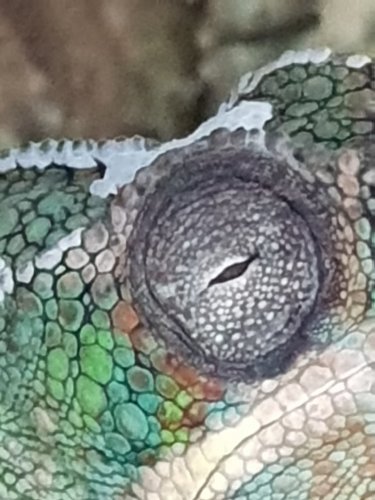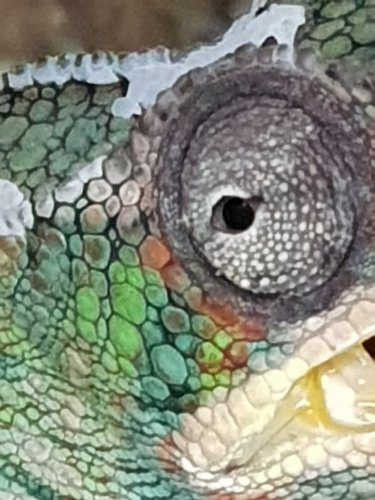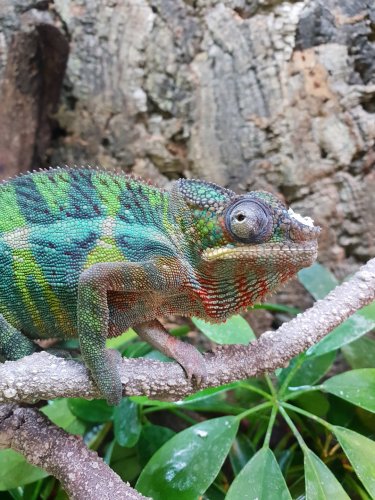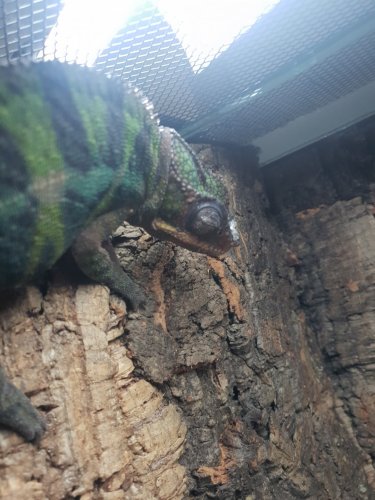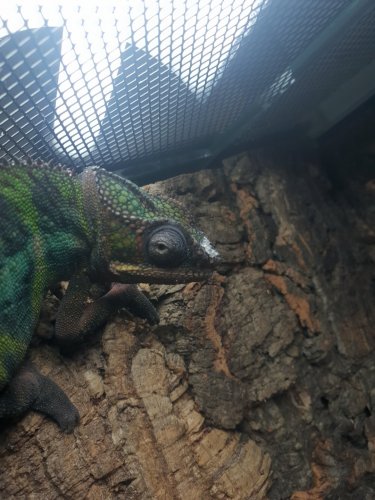Mikebuurskov
New Member
Chameleon Info:
Cage Info:
Current Problem - The current problem you are concerned about.
First light I got was a 75w hid bulb from reptech, but I got advice to change it so I got t5 now.
The problem started a while ago but sometimes it's ok but some days it's closed alot. I don't see any infection but the eye is abit smaller, it's just frustration I got like 10 meanings on this so I would try to get some advice here.
Will post some pics
- Your Chameleon - The species, sex, and age of your chameleon. How long has it been in your care?
- Fucifer ambilobe, male, arround 7months Old, i got him 1.5month ago
- Handling - How often do you handle your chameleon?
- Handfeeding everyday, to try get Him used to me, so atm i dont have Him Our.
- Feeding - What are you feeding your cham? What amount? What is the schedule? How are you gut-loading your feeders?
- I feed Him mainly crickets, and then silkworms and locustus. As Much as he can eat. gut-load with repashy bug burger
- Supplements - What brand and type of calcium and vitamin products are you dusting your feeders with and what is the schedule?
- Pure calcium every feeding, repashy calcium plus 2 times a week. When i got him i used to dose more.
- Watering - What kind of watering technique do you use? How often and how long to you mist? Do you see your chameleon drinking?
- I mist 30mins before light Goes on fore 2mins and then 2.5hour before light go out 2 mine again.
- Fecal Description - Briefly note colors and consistency from recent droppings. Has this chameleon ever been tested for parasites?
- No
- History - Any previous information about your cham that might be useful to others when trying to help you.
Cage Info:
- Cage Type - Describe your cage (Glass, Screen, Combo?) What are the dimensions?
- Glass cage with full screen top, alot of holes in sides and front.
- Lighting - What brand, model, and types of lighting are you using? What is your daily lighting schedule?
- 75w repti-zoo basking bulb and a 10.0 t5 reptisun from zoo med
- Temperature - What temp range have you created (cage floor to basking spot)? Lowest overnight temp? How do you measure these temps?
- Basking temp 84-88f
- Humidity - What are your humidity levels? How are you creating and maintaining these levels? What do you use to measure humidity?
- During the day 50-65% and when mister Goes on up to 80%
- Plants - Are you using live plants? If so, what kind?
- Umbrella tree
- Placement - Where is your cage located? Is it near any fans, air vents, or high traffic areas? At what height is the top of the cage relative to your room floor?
- Its in the cornor of the kitchen, low trafic, and arround 100cm from floor.
- Location - Where are you geographically located?
- I live in Denmark.
Current Problem - The current problem you are concerned about.
First light I got was a 75w hid bulb from reptech, but I got advice to change it so I got t5 now.
The problem started a while ago but sometimes it's ok but some days it's closed alot. I don't see any infection but the eye is abit smaller, it's just frustration I got like 10 meanings on this so I would try to get some advice here.
Will post some pics

